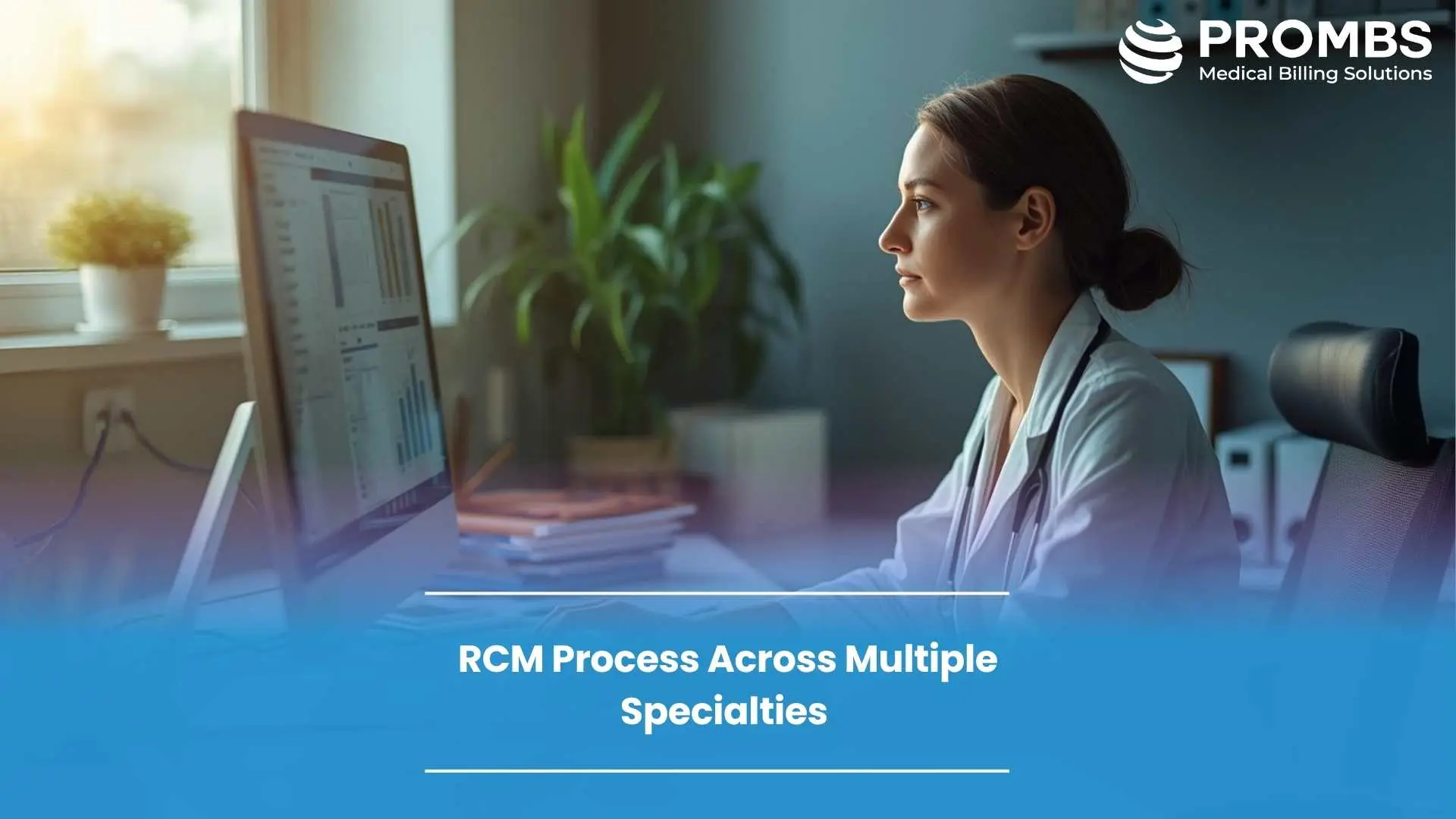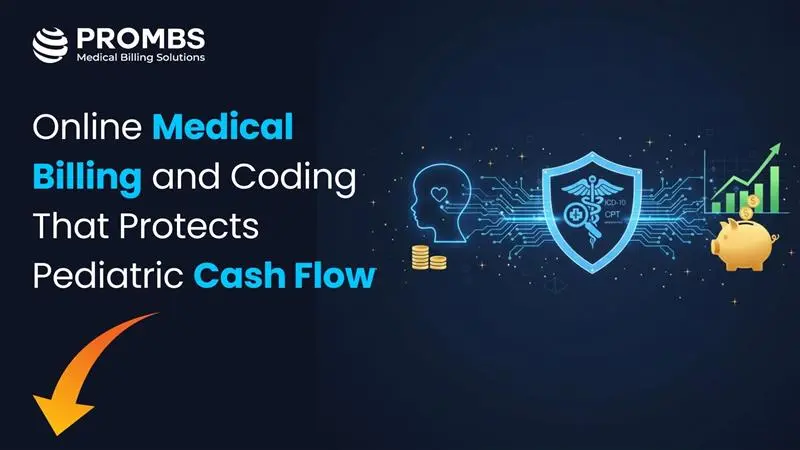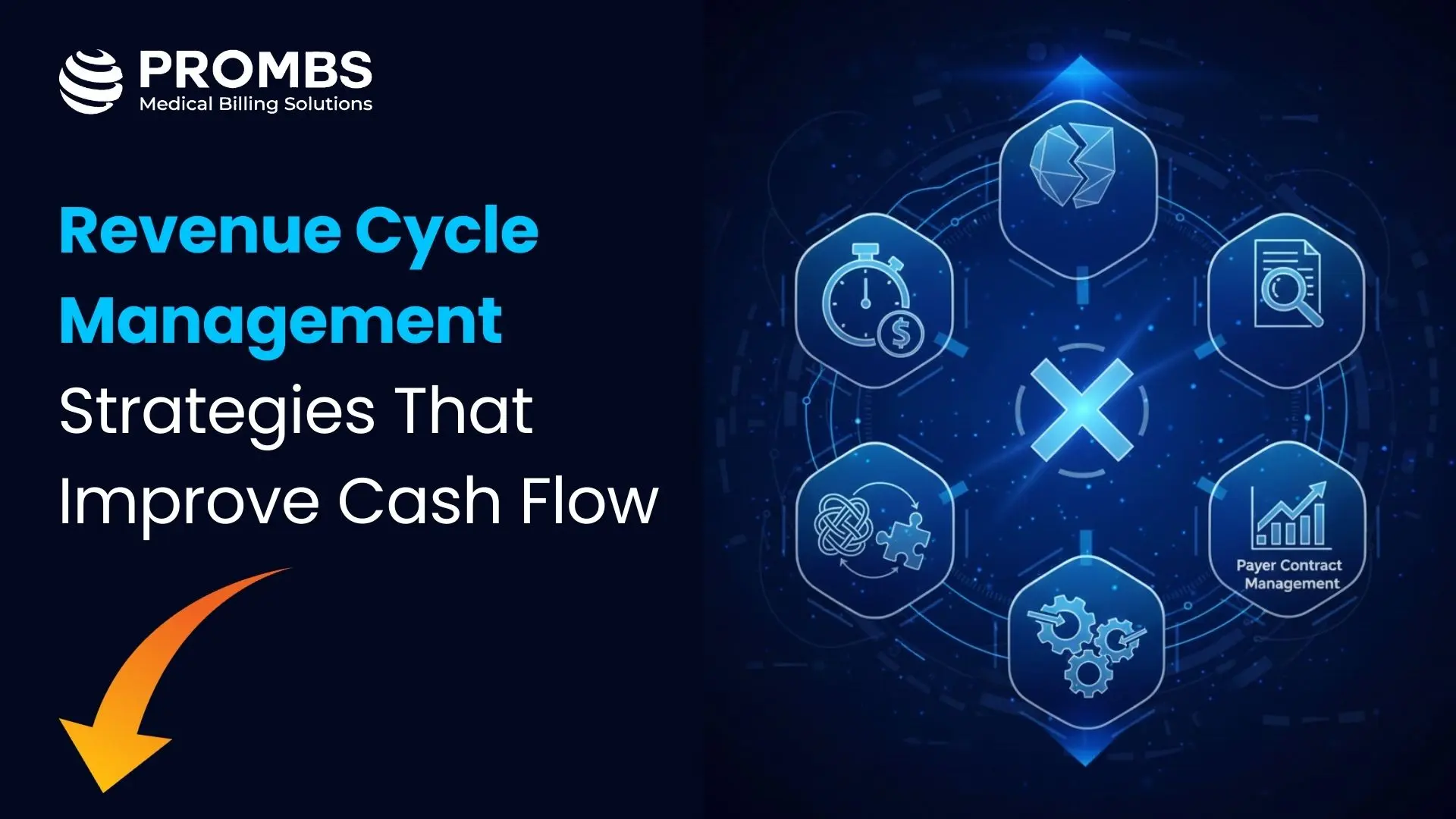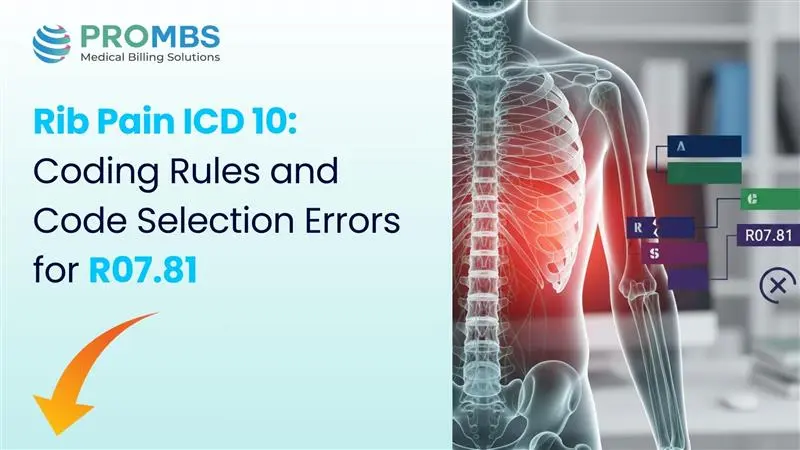Ever feel like every department in your practice speaks a different billing language? You’re not alone. Managing the RCM process across specialties like cardiology, orthopedics, and oncology can feel like juggling three different systems at once, each with its own rules, payer codes, and workflows. When these systems don’t connect, mistakes multiply and payments slow down. According to the American Medical Association, aligning revenue cycle processes across departments not only reduces denials but also boosts billing accuracy.
A consistent RCM process flow keeps everything running smoothly and transparently. It helps teams collaborate instead of working in silos, making daily operations feel far less chaotic. Unified workflows simplify training, improve visibility into financial performance, and ultimately make billing faster, cleaner, and more dependable. When every department follows the same structure, the entire organization benefits from a stronger, steadier revenue cycle.
Why a Unified RCM Process Matters?
Have you ever thought that your billing process has too many moving parts? You’re not alone. The RCM process in healthcare touches every financial step, from patient registration to final payment, and when each specialty follows its own rules, things can get messy fast. In fact, research from the Healthcare Financial Management Association (HFMA) shows that fragmented systems not only increase denial rates but also drive up avoidable costs.
A unified medical billing RCM process brings everything together by connecting registration, coding, billing, and collections in one seamless flow. It improves accuracy, reduces turnaround time, and allows real-time claim tracking. This kind of transparency helps your team spot and fix issues before they disrupt cash flow. What’s more, a shared RCM workflow strengthens collaboration across teams. When billing, coding, and clinical staff follow the same process, communication becomes clearer and tasks move faster. The outcome is quicker payments, fewer denials, and far less stress for everyone involved. Ultimately, a connected RCM process doesn’t just streamline operations, it builds confidence and consistency across your entire revenue cycle.
Common Challenges in Multi-Specialty RCM
Running a smooth RCM billing process across multiple specialties is rarely simple, isn’t it? Each department manages its own payers, codes, and reporting methods, which can easily create confusion and inefficiency. According to Becker’s Hospital Review, more than 40 percent of denials in multi-specialty groups come from inconsistent data entry. So, how much revenue might be slipping through the cracks because of small process differences?
Think about it, orthopedics might rely on modifier codes that cardiology never uses. Could those variations be causing claim rejections and slow payments? When billing data sits in separate systems, finance teams often spend hours reconciling numbers instead of managing performance. And what about training? Billers who specialize in one area may not fully understand another department’s payer rules. Without cross-training, productivity drops whenever staff rotate or rules change. Ultimately, fragmented workflows don’t just slow billing, they slow your entire revenue cycle.
Behavioral health billing combines clinical nuance with payer-specific restrictions. While medical-surgical billing focuses on physical procedures, billing for behavioral health services relies on accurately timed psychotherapy sessions, clinical notes, and documentation of modality (in-person, telehealth, or hybrid).
The Centers for Medicare & Medicaid Services (CMS) emphasizes that only specific CPT/HCPCS codes, like 90832, 90834, and 90837, qualify for reimbursement under behavioral and mental health benefits. You can review the updated list in the CMS Medicare Mental Health Coverage Fact Sheet.
For organizations that deliver multiple service types, such as psychotherapy, medication management, or integrated care, the billing system must reconcile provider credentials, place of service (POS) codes, and supervision requirements.
What are the Core Components of a Unified RCM Model?
Ever feel like getting billing right takes more coordination than patient care itself? Building a truly unified healthcare RCM automation process isn’t just about plugging in software, it’s about blending the right tools, skilled people, and solid structure. Each element works together to create a seamless flow where accuracy and consistency become the norm, not the struggle.
Centralized Billing Infrastructure
A single billing platform is the base of a strong RCM system. It helps capture charges correctly, submit claims faster, and track payments in one place. According to R1 RCM, central billing improves claim accuracy by up to 20 percent.
Centralized systems also make accountability stronger. Because all billing data is accessible, errors can be spotted and fixed before claims are sent. This transparency helps departments work better together and gives leaders a full view of financial activity. A well-integrated platform also connects easily with EHR systems, keeping clinical and financial data aligned.
Standardized Coding and Documentation
Using one set of coding rules for every department reduces confusion and improves compliance. When all teams follow the same CPT and ICD-10 standards, claim quality rises and denials drop. Regular training keeps staff updated on payer and regulation changes. Standard documentation makes onboarding smoother for new hires and lowers the risk of compliance issues. When coding and documentation are consistent, reports become more accurate, audits become easier, and forecasting improves. Consistency builds trust and strengthens long-term financial control.
Real-Time Data Analytics
Real-time dashboards give billing teams instant visibility into claim performance. Healthcare IT News notes that analytics help identify where claims get stuck or denied so teams can fix issues before they slow cash flow. Modern analytics tools can also forecast trends. They show which payers take longer to pay and which procedures face frequent denials. These insights help leaders assign resources wisely and improve financial predictability.
Analytics is more than reports. It gives full visibility into the revenue cycle and helps prevent denials before they happen. When used well, it turns the RCM team into a proactive driver of financial growth.
Steps to Build a Unified End-to-End RCM Process
Building an end-to-end RCM process across multiple specialties requires structure, teamwork, and the right technology. Below are six practical steps to guide the process.

Step 1: Review Current Workflows
Begin by mapping how each specialty handles registration, charge capture, documentation, and billing. Look for duplicate steps, manual tasks, and data gaps that slow down collections. Understanding where breakdowns occur is the first step toward fixing them. This review gives you a clear picture of how each department’s process fits into the larger revenue cycle.
Step 2: Design a Shared Process Map
Create a single RCM process map that defines every key stage, from insurance verification to collections. Keep it simple and uniform so all specialties can follow the same workflow. This shared map acts as a visual guide for staff and ensures that no step, such as coding, documentation, or payment posting, is overlooked. A well-designed map also makes it easier to train new employees and maintain consistency.
Step 3: Implement Modern Technology
Select billing software that integrates with your EHR and supports automation, analytics, and real-time reporting. According to American Hospital Association, almost half of hospitals now use AI in their RCM to cut down on manual work and errors. The right technology reduces paperwork and allows staff to monitor claim progress and payment status in real time.
Step 4: Automate Manual Tasks
Automation can handle repetitive tasks like claim scrubbing, eligibility checks, payment posting, and follow-ups. Robotic process automation ensures fewer human errors and frees staff to focus on resolving denials or improving patient financial communication. It also speeds up turnaround time and helps maintain a steady cash flow.
Step 5: Build Strong Governance
Create a small RCM leadership group responsible for enforcing standards, tracking key performance indicators, and maintaining compliance. This team should meet regularly to review reports, adjust policies, and address bottlenecks. Strong governance keeps the process consistent across specialties and ensures accountability at every level.
Step 6: Provide Continuous Training
Offer regular training sessions for billing, coding, and front-office staff. Cross-train employees so they can work effectively across multiple specialties and adapt quickly to payer changes. Continuous learning builds flexibility, reduces errors, and supports long-term staff retention. When everyone stays informed and confident, the entire RCM process becomes smoother and more efficient.
Is Your Unified RCM Process Really Working? Here’s How to Tell
A successful RCM process depends on measurable results. The Medical Group Management Association recommends tracking these key performance metrics to maintain strong financial control and steady cash flow.
Clean Claim Rate: Measures how many claims are accepted by payers without edits, errors, or resubmissions. A high rate shows your billing team is submitting accurate, complete claims the first time.
Denial Rate: Tracks how often payers reject claims and why. A lower denial rate means fewer billing errors, better documentation, and stronger compliance with payer requirements.
Days in A/R: Shows how long it takes for payments to be collected after claims are submitted. Fewer days in accounts receivable indicate faster reimbursements and improved cash flow management.
Net Collection Rate: Reveals how much of the total allowable revenue is actually collected. A higher rate signals efficient billing, effective follow-up, and minimal write-offs.
First-Pass Resolution Rate: Indicates the percentage of claims paid in full after the first submission. This metric highlights how well your RCM process prevents denials and delays before they happen.
Regularly reviewing these numbers helps pinpoint process gaps, improve workflows, and maintain financial stability across all specialties.
The Role of Technology in RCM Integration
Ever wish your RCM process could almost run itself? Technology is making that vision closer to reality. Artificial Intelligence (AI) and machine learning now detect coding errors and predict denials before claims are even sent. According to McKinsey & Company, RCM automation could save the U.S. healthcare system nearly $200 billion each year. AI-driven coding tools also suggest correct codes and highlight missing documentation, while predictive analytics flag high-risk claims so teams can address them early.
Connecting billing platforms with EHR systems keeps patient and financial data perfectly aligned. This reduces duplicate work, improves accuracy, and strengthens compliance. The good news is that technology isn’t replacing people, it’s empowering them to work faster, smarter, and with far less stress.
How Pro-MBS Can Fix Your RCM Issues?
If your billing feels disorganized or your collections are slower than expected, Pro-MBS can help you get back on track. We know that managing a multi-specialty RCM process is complex and time-consuming. Each department has different rules, workflows, and payer demands, which often lead to confusion and denials. Our team simplifies this by creating one connected system that keeps every part of your billing cycle moving efficiently.
We focus on solving the exact pain points that hold your revenue cycle back. Our solutions combine technology, process improvement, and human expertise to deliver real results.
- End-to-End RCM Optimization: We manage everything from patient registration to final payment posting, ensuring faster reimbursements and fewer denials.
- Automation and Analytics Tools: Our smart software eliminates manual errors, tracks claim status in real time, and helps identify trends before they become costly problems.
With Pro-MBS, your practice gets more than a billing service. You gain a trusted partner who helps standardize workflows, train staff, and improve financial visibility. The result is smoother operations, stronger compliance, and better revenue for every specialty.
FAQs
What are the 7 steps of RCM?
The 7 steps of the RCM process are patient registration, insurance verification, medical coding, charge entry, claim submission, payment posting, and denial management. Each step ensures billing accuracy and a smoother revenue cycle.
What are the 5 steps of the revenue management process?
The 5 steps of the revenue management process are data collection, demand forecasting, pricing strategy, inventory control, and performance analysis. Each step helps optimize revenue and improve financial efficiency.
What is the RCM process workflow?
The RCM process workflow covers all key stages from patient registration and insurance verification to coding, claim submission, payment posting, and denial management, ensuring a consistent and efficient revenue cycle.
What are the steps in the RCM cycle?
The steps in the RCM cycle include patient registration, insurance verification, medical coding, charge entry, claim submission, payment posting, and denial management to ensure accurate billing and steady cash flow.
How many levels does RCM have?
The RCM process has three levels: front-end, mid-cycle, and back-end, each focusing on patient intake, claim processing, and payment collection for a complete revenue cycle.
What are the three pillars of RCM?
The three pillars of the RCM process are people, process, and technology, working together to ensure accurate billing, efficient workflows, and stronger revenue performance.



